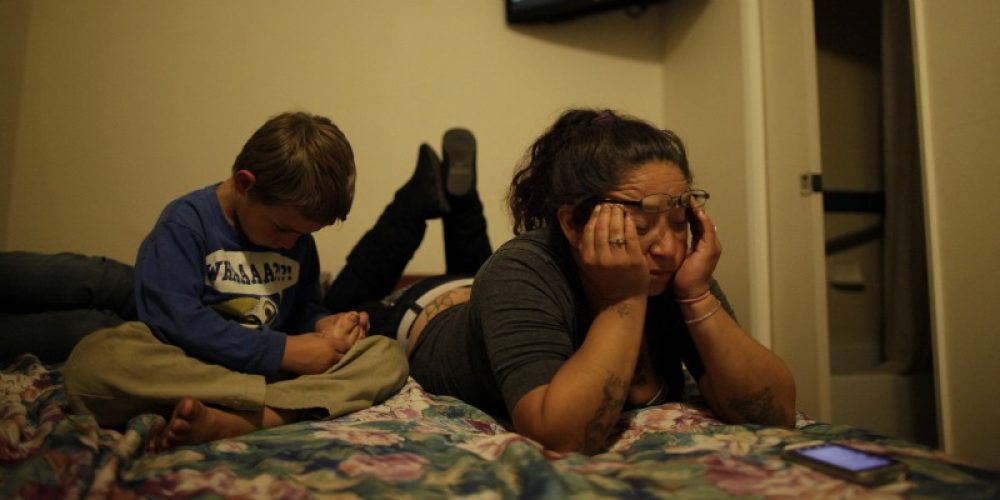
11-18-22 Live Show Are Single Mothers Destroying The BLK Community? (Live Broadcast)
by Tj Sotomayor November 18, 2022 0 commentsCall In To Talk Live!
By: Tommy “Tj” Sotomayor
You probably remember the headlines about “Breadwinner Moms” a few months ago. The Pew Center had published a report finding women are the best-paid workers in a record 40 percent of households with children under 18. That’s practically quadruple the 1960 number.
But a little detail was often lost in the large-font headlines. Sixty percent of “breadwinner-mom” families are really just single-mom families. In fact, single moms account for precisely one-quarter of U.S. households. Single dads make up another 6 percent.
In other words, the biggest story here isn’t the rise of female earners, exactly, even though that’s a distinct and powerful trend. This is really a story about a more astonishing fact: Single parents have more than tripled as a share of American households since 1960.
Single parent households exist in a different socioeconomic pool than married households. Single mothers earn incomes that place them well below married mothers on the income ladder. According to Pew, married mothers earned a median family income of $80,000 in 2011–almost four times more than families led by a single mom. This is likely a consequence of the lower educational qualifications of single mothers as well as the fact that they are younger and more likely to be black or Hispanic. Married mothers tend to be older and are disproportionately white and college-educated.
Our own analysis, using data from the Current Population Survey March Supplement for 2007-2012 closely parallels Pew’s findings with some interesting nuances. In 2007, a married mother earned an average income of $57,194, nearly double that of single moms. Even after the recession hit married couples the hardest, average real incomes of single moms were just 60 percent of married moms in 2012. Differences in incomes between single and married dads also persisted over the course of the recession.
Although single dads earn more than single moms, single parents, overall, earn less than married parents. It comes down to jobs, really. More than 80 percent of moms with spouses are employed, but only 60 percent of single mothers have full-time jobs — perhaps due to the difficulty of managing children alone. Similarly, single dads are less likely to have full-time jobs (69 percent) than married dads (88 percent).
There is much more research to do, but this much we know: single parents work less and earn less because they are the sole caretakers for their children. A recent report by the International Labor Organization shows that the US is the only country in the top fifteen most competitive ones that does not mandate paid maternity leave, paid sick leave, and does not guarantee paid vacation time. New parents in the US are guaranteed their jobs for 12 weeks after the arrival of a new baby under the Family Medical Leave Act of 1993, but this leave does not have to be paid.
Paying for childcare can also be incredibly costly, driving down the incentives to work. Research confirms this intuition in several ways. Mothers who live near their mothers or mothers-in-law participate in the labor force significantly more than mothers who do not live close. Childcare subsidies can be incredibly important in allowing single mothers to find jobs with conventional or standard schedules.
The ability to work a standard schedule is more important than one might expect. A few studies have found that workers engaged in non-standard work are more likely to be assigned to routine jobs and to receive less training and fewer promotions than others. Consequently, these workers earn less and are less likely to have health insurance and pension benefits than standard workers. Furthermore, nonstandard work is linked to a number of adverse outcomes for parents and children such as work and family conflicts, marital instability, health problems for both parents and children, and poor educational outcomes for children.
Most strikingly, our data suggests that the presence or absence of children might be the single biggest factor explaining income differences between single and married mothers. For single and married women without children, the average difference in income in 2012 was $857—almost inconsequential compared to the almost $19,000 difference between single and married mothers. The differences for single and married men are also lower in the case of no children, but they are still fairly significant.
Hence, the rise of single parenting, particularly single mothers, represents both a promise and a problem. If this is the path forward for society, we need to do all that we can to ensure that for these families, single parenting is in fact a dream, and not the enormous challenge that it is today.






No Comments so far
Jump into a conversationNo Comments Yet!
You can be the one to start a conversation.Only registered users can comment.